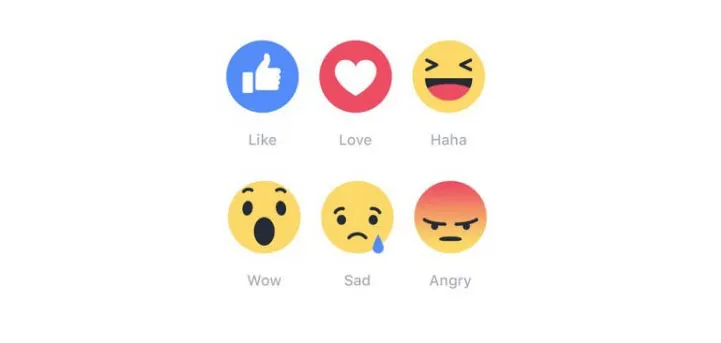


Sad Face: Facebook reactions are hardly being used.
Three months after they were rolled out, Facebook reactions are hardly being used.


Recognise those guys above? You probably do. Earlier this year, Facebook rolled out its new reactions to much fanfare - these were going to be a game-changer. Or so we thought.
But, now three months down the line, the revolution we were promised hasn’t materialised. In fact, they’re hardly being used. Like, not at all.
According to a new study by social analytics company Quintly, the ‘Like’ button still gets a big thumbs up from Facebook users, accounting for a massive 97% of all reactions. It seems that, despite 5 new reactions to choose from, people are sticking to what they know.
So why the slow uptake?
Firstly, we’ve all carefully curated our news feed. From the people we’re friends with to the brands and publishers we choose to follow, a large amount of content served to us on Facebook will be from users that we already have a certain affinity with. So, for example, the chances of me reacting with an angry face to something my best friend has posted is already reduced. Likewise, I follow a brand because I like their products – these are unlikely to make me angry!
That most mystic of things - Facebook’s algorithm – is also so finely-tuned that it has a pretty good handle on the types of content we like, interact with and want to see more of, so again it is less likely that we’ll be served content which will have our thumb reaching for that angry face.
That said, if we agree that we’re being presented with the content we really want to see, surely we should be seeing more uptake of the positive reactions?
One possible reason for this is that we’re all creatures of habit. Since its launch in 2009, the ‘Like’ button has become a massive part of all our lives, synonymous with not only Facebook, but social media and the internet as a whole. It is force of habit. We’re used to the ‘Like’ button and we’ll happily press it. For example, who isn’t guilty of seeing a story appear in our feed, looking at the headline and giving it a thumbs up without even reading the article?
You also have to factor in the time and effort (using that very loosely here) it takes to select any of the new reactions. As we scroll rapidly through our feeds, who’s wants to press down and wait for the reactions to pop up, when we could just hit ‘Like’ and keep scrolling. To be clear, we’re only talking less than a second here, but it’s definitely a factor and something we’re sure The Social Network will be looking into. For example, if all the reactions were listed at the bottom of a post alongside the ‘Like’ button this would speed up the process and encourage more use of them.
If they’re not being used, will Facebook scrap them?
While it’s still early days for Facebook’s reactions, the benefits they could provide to brands and publishers (especially as Facebook continues to roll out Instant Articles) are huge. It’s easy to get bogged down in a mess of metrics and data, but reactions can provide a simple, quick snapshot of how your content’s performing and what your audience likes.

As we predicted back in February, Facebook has also been playing around with temporary reactions, adding a flower to the existing reactions for Mother’s Day last Sunday. This not only raises the prospect of more topical reactions – we’re thinking sporting events, award ceremonies and public holidays – but also the potential for brands and advertisers to unleash sponsored reactions.
In short, despite the limited uptake, Facebook won’t be giving up on reactions any time soon.
Posted 12 May 2016 by Ben Waterhouse